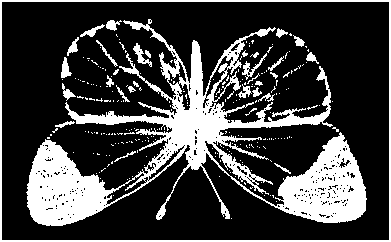Tiburón
The 1894 and 1895
Field Diaries of
W J McGee
Hazel McFeely Fontana,
Transcriber
(University of Arizona)
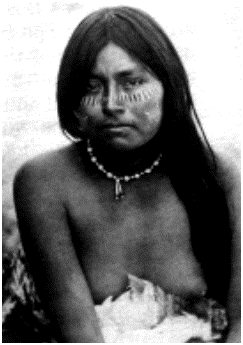
Water stolen from the Colorado River and air-conditioning have made parts of this area somewhat more liveable, although three of its main cities --- El Centro, California; Tucson, Arizona; and Mexicali (Sonora) Mexico --- don't exactly figure as The World's Most Desirable Vacation Villages.
A hundred years ago, this desert was the province of a few brave ranchers, and vestigial Indian tribes: Yaqui, Papago (also called the Tohono O'odham) and the Seris. William John McGee, a budding anthropologist, was hired by the Bureau of American Ethnology to track through this wasteland on both sides of the border, take photographs, and produce reports on the geology, plant and animal life, and the inhabitants. Trails to Tiburón is a transcription of his journals.
It makes for mildly interesting reading, especially if you have a beer-cooler at your side. To do this kind of exploration 1895, you didn't just spray yourself with Bug-A-Way, crank up the Land Rover and pull on your L L Bean boots. It was you and horses and Indian guides and a couple of translators tromping through the damnable dust and wind, cursing your fate.
Water was always a problem; footwear too (McGee gives an exhaustive description of the worn-out condition of the boots of his fellow travellers). Most fearsome of all was the fear of attack by the Seris who hadn't been "pacified." McGee keeps his eyes open, and, in his writings, turns out to be one of those non-flappable 19th Century explorers, one who can on occasion even turn a phrase. This at Granite Cove, at the edge of the Gulf of California:
The wash of the surf was in my ears, the burning brine was in my eyes, and the vile smell of the sewage of the ages filled my nostrils, and sleep was slow in coming and fitful in its stay.
One of the reasons that the Seris were so troublesome is that the settlers had been troublesome for them. Like many of those who had lived in the area forever, they figured that any cow or horse they found walking around was free for the taking. A Mexican cacique, Señor Pascual Encinas, told the Indians that if they didn't leave his livestock alone, he would kill them. And sure enough, there were several engagements with the Seris losing about 250 men, women and children. Rather naively, McGee says that soon enough
the Seris came to look on Señor Pascual with affectionate admiration --- or as nearly affectionate admiration as their sentiments and vocabulary permit.
Anyone with an interest in heat-strokes and the wildlife, ecology, and tribes of Sonoran Desert of 1894 - 1895 won't want to miss this one. The rest of us, fortunately, might want to be spared, for example, McGee's description of excavating a grave at Agua Amarilla, or the description of a boy in Rancho San Francisco, "seizing the half born puppy, jerked off the attending placenta, and followed by one or two others rushed away with his prize, evidently with the intention of eating it." He concludes,
between the horse, the pig, the pot of burned beans we gave them and the two dollars worth of sugar cane I distributed among them, the Seris fared sumptuously.
What are most interesting are the observations of a relatively untouched people:
There are not words for greeting or parting, and salutations and goodbyes are breaches of etiquette. Handshaking is tolerated, though generally with scant grace, and when an invitation is extended, etiquette demands an indifferent stance of some duration, and a final ungracious acceptance...In several cases when the plate [of food] was passed the intended recipient gazed into vacancy a moment, with the outstretched plate before him, before ostensibly seeing it and reaching to take it.
Bunches of Beetles
How Bugs Find
Strength in Numbers
Gilbert Waldbauer
(Harvard)
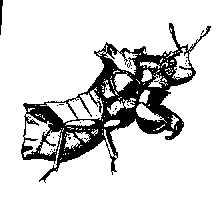
Shortly after the release, the area was repeatedly searched for marked beetles. On the third day after the release only 67 were found within a mile of the release point; 1 was found at something over a mile away; and 2 were found almost 5 miles away.
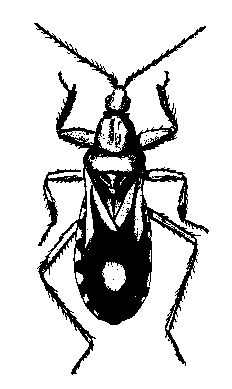 Beetles, Monarch butterflies, Tent caterpillars, locusts, Mayflies, cicadas --- they, like the AARP and fundamentalists, find extraordinary strength in numbers, and Waldbauer tells all. Take your locusts. When they get hungry and decide to join the International Locust Union, they form swarms, according to one observer, that can be 300 miles long and 100 miles wide. Imagine getting 10,000 of those buggers caught in your windshield wipers.
Beetles, Monarch butterflies, Tent caterpillars, locusts, Mayflies, cicadas --- they, like the AARP and fundamentalists, find extraordinary strength in numbers, and Waldbauer tells all. Take your locusts. When they get hungry and decide to join the International Locust Union, they form swarms, according to one observer, that can be 300 miles long and 100 miles wide. Imagine getting 10,000 of those buggers caught in your windshield wipers.
According to an estimate based on photographic techniques and published in 1958, several swarms that convened in one area of Africa consisted of about 50 billion desert locusts that altogether weighed somewhat more than 115,000 tons.
Hot? Invite some honeybees into your parlor. They cool their nests by fanning their wings to circulate the air, and spreading thin layers of water on the combs. On the other hand, when it gets too cold, "workers crowd more or less closely around the brood and generate enough heat to keep it at the optimal temperature of 95 degrees." Other workers eat honey and vibrate their wing muscles "without moving their wings," thus converting calories to heat.
At times Dr. Waldbauer's writing turns a bit lumpy, like caterpillars in the stew --- but the facts he comes up with make it hard to put these bugs down.
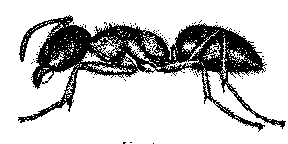
--- Carlos Amantea
Butterflies
Unpublished and
Uncollected
Writings
Brian Boyd,
Robert M. Pyle,
Dmitri Nabokov
(Beacon)
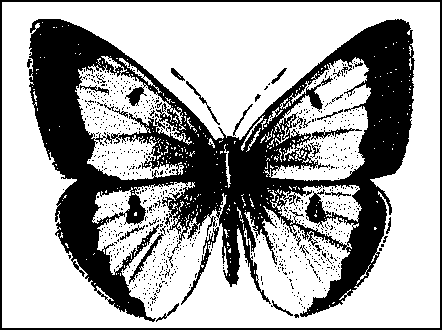 Boyd, Pyle, et al have collected about 800 pages of letters, excerpts from novels, poems, and other miscellanea from the pen of Vladimir Nabokov. It is all arranged by date, starting in 1906 and going to the time when he hung it up in 1977. The ostensible purpose here is to show the writer-
Boyd, Pyle, et al have collected about 800 pages of letters, excerpts from novels, poems, and other miscellanea from the pen of Vladimir Nabokov. It is all arranged by date, starting in 1906 and going to the time when he hung it up in 1977. The ostensible purpose here is to show the writer-When you think about it, though, it's a pretty silly idea, and I suspect this volume would be something that Nabokov himself would scorn. He notoriously loathed the excerpting of his writings; he was militant in keeping his private life --- like his letters --- from becoming public; and he rarely loaned himself out for interviews. That Brian Boyd would be brought into this project is a major sin, since his two-volume biography of Nabokov was trivial, tedious, weighty, and --- most appallingly --- showed that he had learned little if nothing of the writing style of the master. (Nabokov's character, Dr. Charles Kinbote in Pale Fire, is a parody of every PhD who built fame and fortune on the corpse of a writer.)
 Most of all, there is the necessary splaying of purpose: if this is strictly Vladimir Nabokov and butterflies, why are all these other doo-dads stuck in here? For instance, we have on page 510 - 511 an excerpt from Lolita. It is a richly poignant and --- for the purposes of the novel --- crucial moment: after killing Clare Quilty, Humbert Humbert has just surrendered to the police, and while awaiting them, has a moment of reflection. It shows Nabokov at his scrupulously non-sentimental best:
Most of all, there is the necessary splaying of purpose: if this is strictly Vladimir Nabokov and butterflies, why are all these other doo-dads stuck in here? For instance, we have on page 510 - 511 an excerpt from Lolita. It is a richly poignant and --- for the purposes of the novel --- crucial moment: after killing Clare Quilty, Humbert Humbert has just surrendered to the police, and while awaiting them, has a moment of reflection. It shows Nabokov at his scrupulously non-sentimental best:
One day, soon after her disappearance, an attack of abominable nausea forced me to pull up on the ghost of an old mountain road that now accompanied, now traversed a brand new highway, with its population of asters bathing in the detached warmth of a paleblue afternoon in late summer. After coughing myself inside out, I rested a while on a boulder, and then, thinking the sweet air might do me good, walked a little way toward a low stone parapet on the precipice side of the highway. Small grasshoppers spurted out of the withered roadside weeds. A very light cloud was opening its arms and moving toward a slightly more substantial one belonging to another, more sluggish, heavenlogged system. As I approached the friendly abyss, I grew aware of a melodious unity of sounds rising like vapor from a small mining town that lay at my feet, in a fold of the valley.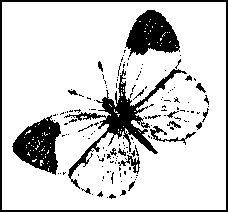 One could make out the geometry of the streets between blocks of red and gray roofs, and green puffs of trees, and a serpentine stream, and the rich, ore-like glitter of the city dump, and beyond the town, roads crisscrossing the crazy quilt of dark and pale fields, and behind it all, great timbered mountains. But even brighter than those quietly rejoicing colors --- for there are colors and shades that seem to enjoy themselves in good company --- both brighter and dreamier to the ear than they were to the eye, was that vapory vibration of accumulated sounds that never ceased for a moment, as it rose to the lip of granite where I stood wiping my foul mouth. And soon I realized that all these sounds were of one nature, that no other sounds but these came from the streets of the transparent town, with the women at home and the men away. Reader! What I heard was but the melody of children at play, nothing but that, and so limpid was the air that within this vapor of blended voices, majestic and minute, remote and magically near, frank and divinely enigmatic --- one could hear now and then, as if released, an almost articulate spurt of vivid laughter, or the crack of a bat, or the clatter of a toy wagon, but it was all really too far for the eye to distinguish any movement in the lightly etched streets. I stood listening to that musical vibration from my lofty slope, to those flashes of separate cries with a kind of demure murmur for background, and then I knew that the hopelessly poignant thing was not Lolita's absence from my side, but the absence of her voice from that concord.
One could make out the geometry of the streets between blocks of red and gray roofs, and green puffs of trees, and a serpentine stream, and the rich, ore-like glitter of the city dump, and beyond the town, roads crisscrossing the crazy quilt of dark and pale fields, and behind it all, great timbered mountains. But even brighter than those quietly rejoicing colors --- for there are colors and shades that seem to enjoy themselves in good company --- both brighter and dreamier to the ear than they were to the eye, was that vapory vibration of accumulated sounds that never ceased for a moment, as it rose to the lip of granite where I stood wiping my foul mouth. And soon I realized that all these sounds were of one nature, that no other sounds but these came from the streets of the transparent town, with the women at home and the men away. Reader! What I heard was but the melody of children at play, nothing but that, and so limpid was the air that within this vapor of blended voices, majestic and minute, remote and magically near, frank and divinely enigmatic --- one could hear now and then, as if released, an almost articulate spurt of vivid laughter, or the crack of a bat, or the clatter of a toy wagon, but it was all really too far for the eye to distinguish any movement in the lightly etched streets. I stood listening to that musical vibration from my lofty slope, to those flashes of separate cries with a kind of demure murmur for background, and then I knew that the hopelessly poignant thing was not Lolita's absence from my side, but the absence of her voice from that concord.
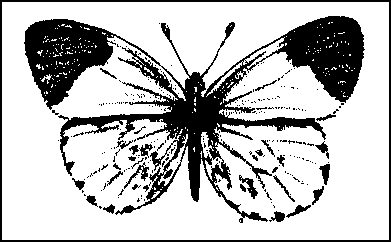 It is, needless to say, a glorious piece of writing, Nabokov at the top of his form --- the intensely vivid description of a place and a time, vision and sound intertwined with aching despair, complete with a sly symbolism (Humbert and his love in the clouds), a hint of the temptation of suicide, and the interwoven moment of knowledge of our hero which turns the book from a strange demented caper into a tragedy: for it tell us not only what Humbert Humbert had lost when he lost Lolita, but what she had lost in having been forced to spend those years with him.
It is, needless to say, a glorious piece of writing, Nabokov at the top of his form --- the intensely vivid description of a place and a time, vision and sound intertwined with aching despair, complete with a sly symbolism (Humbert and his love in the clouds), a hint of the temptation of suicide, and the interwoven moment of knowledge of our hero which turns the book from a strange demented caper into a tragedy: for it tell us not only what Humbert Humbert had lost when he lost Lolita, but what she had lost in having been forced to spend those years with him.
However, as gorgeous as it is, unless asters or grasshoppers have somehow been transformed into a secret brand of butterflies, it hardly belongs in the present volume.
